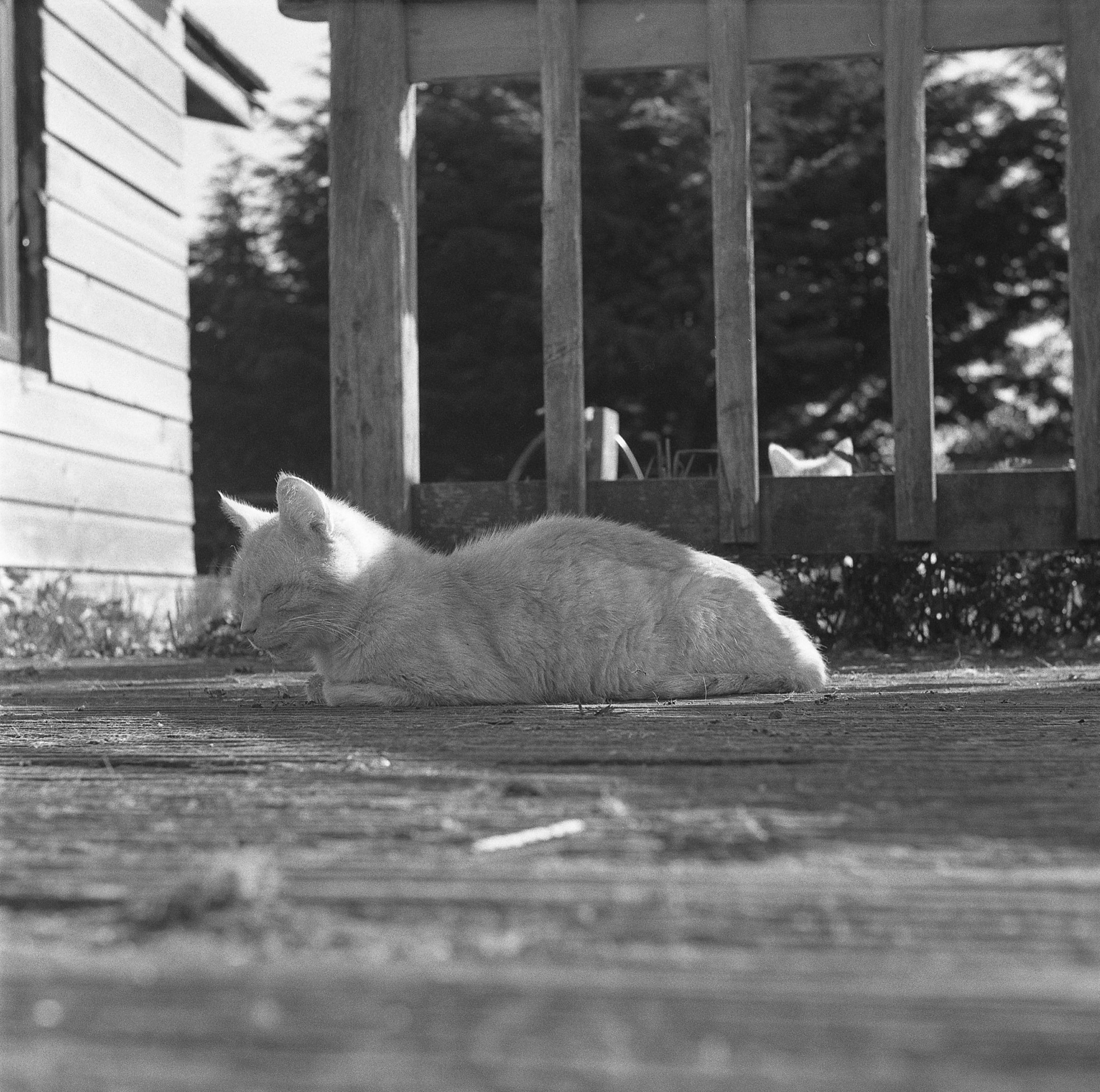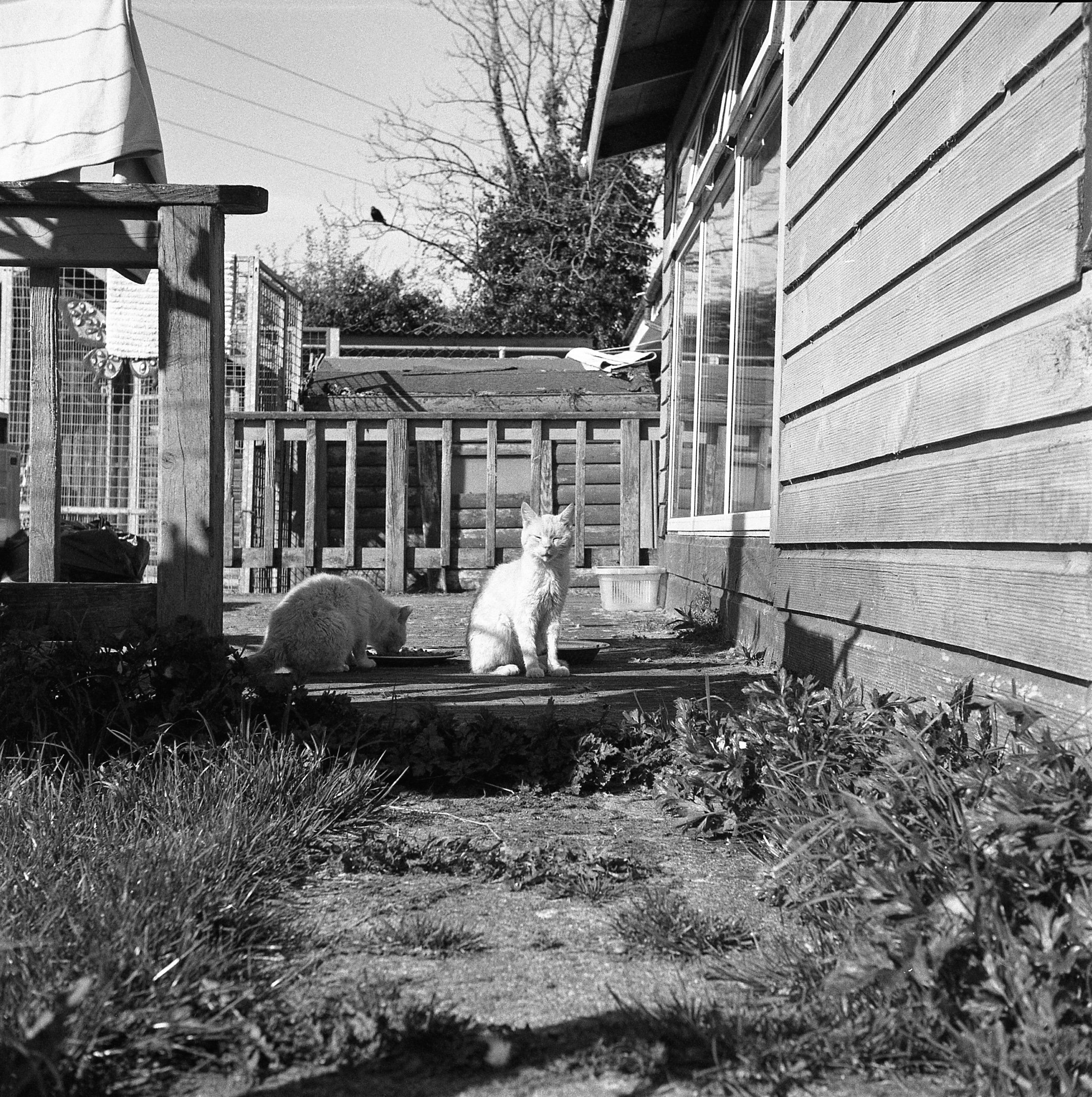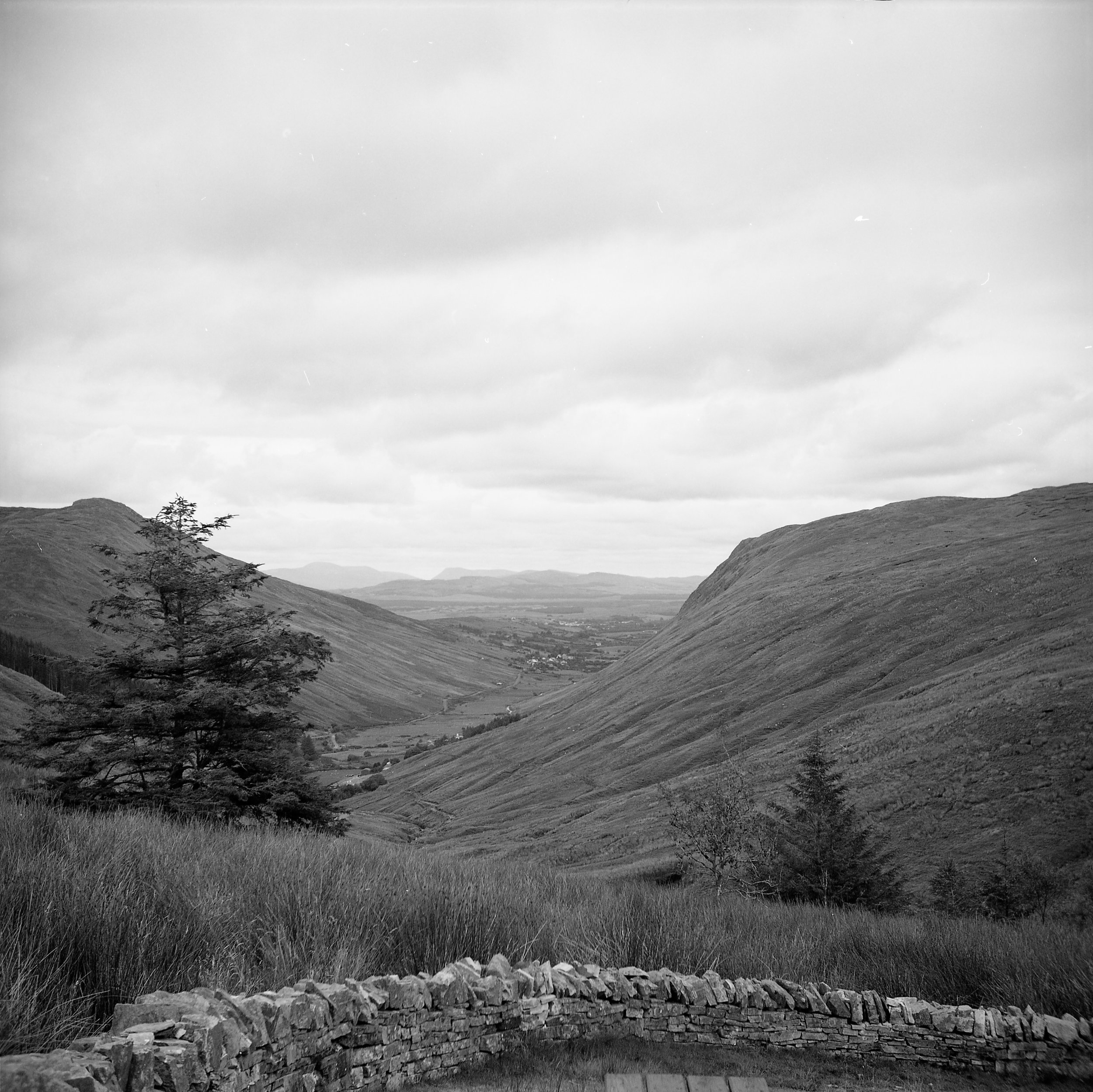Slowing down with my Yashica 635
The Yashica 635 Twin Lens Reflex
In common with many manufacturers seeing the success of the Rolleiflex, the Japanese manufacturer Yashica, began to market their own Twin Lens Reflex cameras from 1953. These included the wonderfully named Pigeonflex, the Yashimaflex which later became the Yashicaflex, and the Yashica Mat. In 1958, Yashica introduced their double format TLR, the Yashica 635. The 635 is so named as it can produce both 6x6cm images on 120 film and 35mm photographs. A 35mm adapter kit has to be installed in the camera in order to shoot 35mm film. However, the 635 was not the first TLR that could be adapted to shoot 35mm, if you had a Rolleiflex you could purchase the Rolleikin adapter for the same purpose. The 635 was a significant export model for Yashica and continued to be produced until the early 1970’s.
Using the 635
The lens on the camera is a Yashikor 1:3,5 f=80mm with a Copal MXV shutter allowing shutter speeds of 1-1/500. Exposure can be set from f/3.5 to f/22. A roll of 120 film will give you 12 exposures on the 635. The film winder, the focusing knob and the exposure counter are located on the right side of the camera (if you’re holding it as if you are going to take a photograph). On the left hand side is the 35mm advance knob and 35mm rewind knob. The wheels on either side of the lens control the shutter and the aperture while the shutter release button is located on the bottom right under the taking lens. This allows easy operation of most of the controls with your right hand while holding the camera steady in your left.
Film is loaded into the camera by turning the dial on the bottom of the camera. The back opens up and like most TLR cameras, the film is loaded into the lower chamber and pulled up to the top chamber where you insert it into an empty spool. You wind the film on until the arrow appears on your film and then line it up with the red arrows in the loading compartment, the process is easy and straightforward.
Focusing Knob on the Yashica 635
The focusing hood opens up and photographs are usually taken by holding the camera at waist level and composing your image by looking at the focusing screen. There is a small magnifying glass that can be flipped up to help ensure that your image is accurately focused. I find the focusing screen on the 635 to be bright and clear especially when using the camera outdoors. There is the option of using the sports finder which involves pushing the front of the focusing hood down and looking through a small square at the back of the hood to compose the photograph. However, this is not a feature I have used to date and so I cannot say whether it is necessary.
Starting the Journey
I started my journey of collecting cameras five years ago and the Yashica 635 was the first TLR that I have ever owned. It was a gift to me from a loved one and to this day it continues to be my favourite camera to use and one of the most precious in my collection. Not only is it an absolutely stunning looking camera, it also takes fantastic photographs. Sometimes the edges of the image may be a little soft, but for me this adds character and gives that beautiful classic aesthetic to the photographs. After all, I don’t shoot film for perfection, I shoot it for fun. In general though I find the image quality of the 635 to be sharp and clear once you get your focusing right.
Howth Lighthouse, County Dublin, Ireland
I used the wonderful resource that is yashicatlr.com to find out more information on my own model. I was both surprised and delighted to discover from my serial number that I have an early 1958 edition, July 1958 to be precise. Another indicator of this is the format of the Yashica writing in between the lenses. My own version shows ‘Yashica’ written in an oval, where later models had the Yashica name written in bold block letters. I feel that the photographs I've captured on the 635 are all the more impressive given the age of the camera.
TLR Quirks
There are quirks to using a TLR such as the reverse image when looking at the focusing screen and also the weight of these cameras. The 635 is not a light camera to carry around but at the same time that weight makes the camera feel solid and reliable. The 635 does not have an in-built light meter so I personally use the Sunny 16 rule to work out my exposure. I have on occasion also used an external light meter. If you forget to wind on the film after taking an exposure, you can end up with a double exposure. Or, if you're as forgetful as I am, a triple exposure.
Triple Exposure
If you can overcome these quirks then shooting a TLR is an absolute joy and the 635 is no exception. I have taken this camera on numerous holidays to date and have been delighted with the photographs it has produced. In my own experience, using a a TLR forces you to really slow down and take your time with your photography. It can be a slow process to compose your image, ensure it is in focus and that your settings are correct. But in my mind, this isn’t a bad thing. In a world where where we can take instantaneous snapshots on our phones and probably never look at them again, there is no harm in slowing down and being deliberate in the images that we take. For anyone who is looking to give medium format photography a try I can wholeheartedly recommend the Yashica 635, a solid and beautiful camera that produces quality medium format photographs.
Mount Errigal, County Donegal, Ireland
Many thanks to Paul Sokk at Yashica TLR for generously helping me to date my Yashica 635. His site is a wonderful resource for Yashica cameras and history and well worth checking out.










